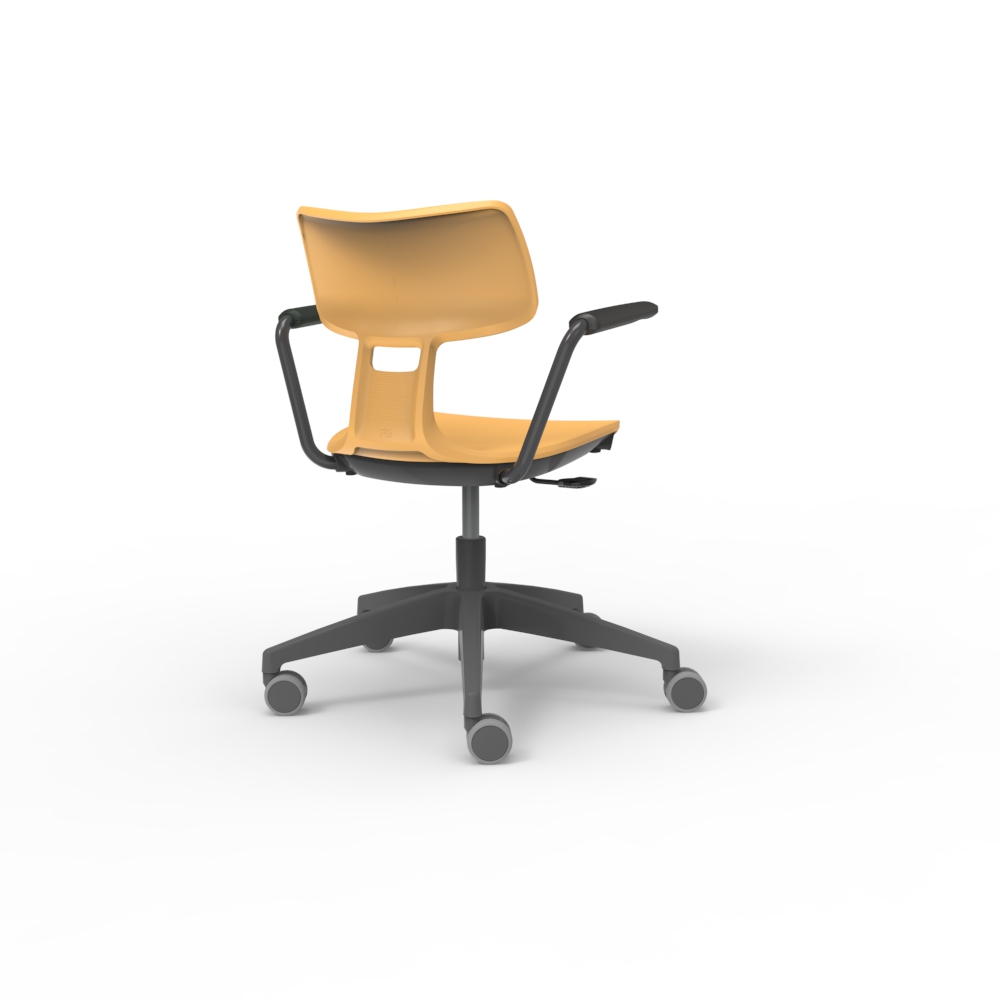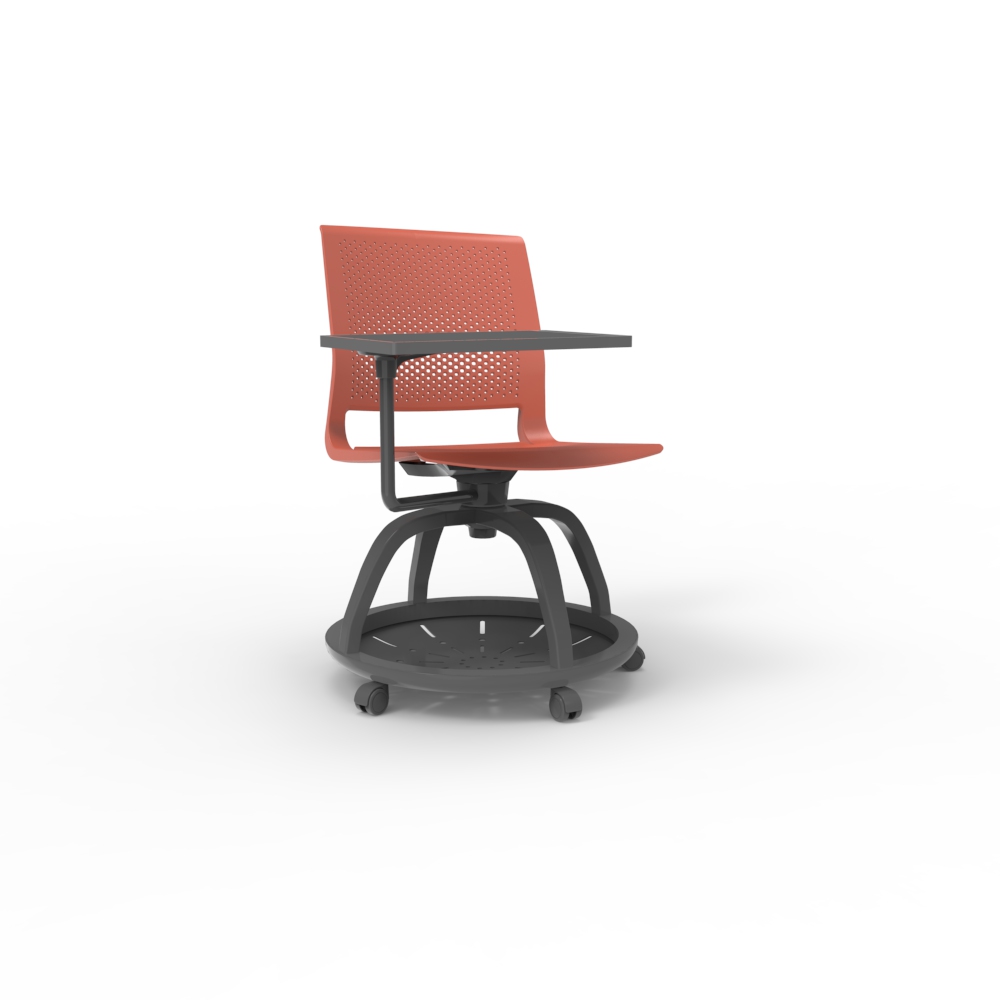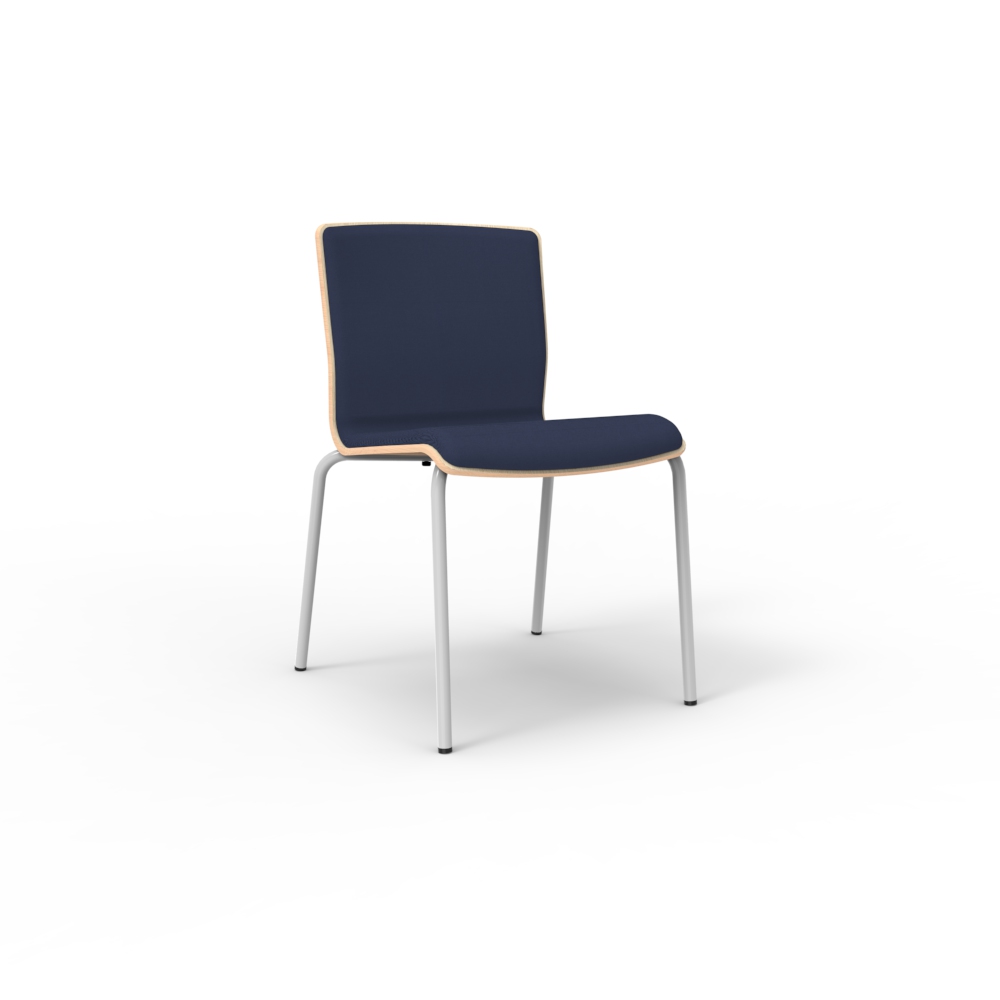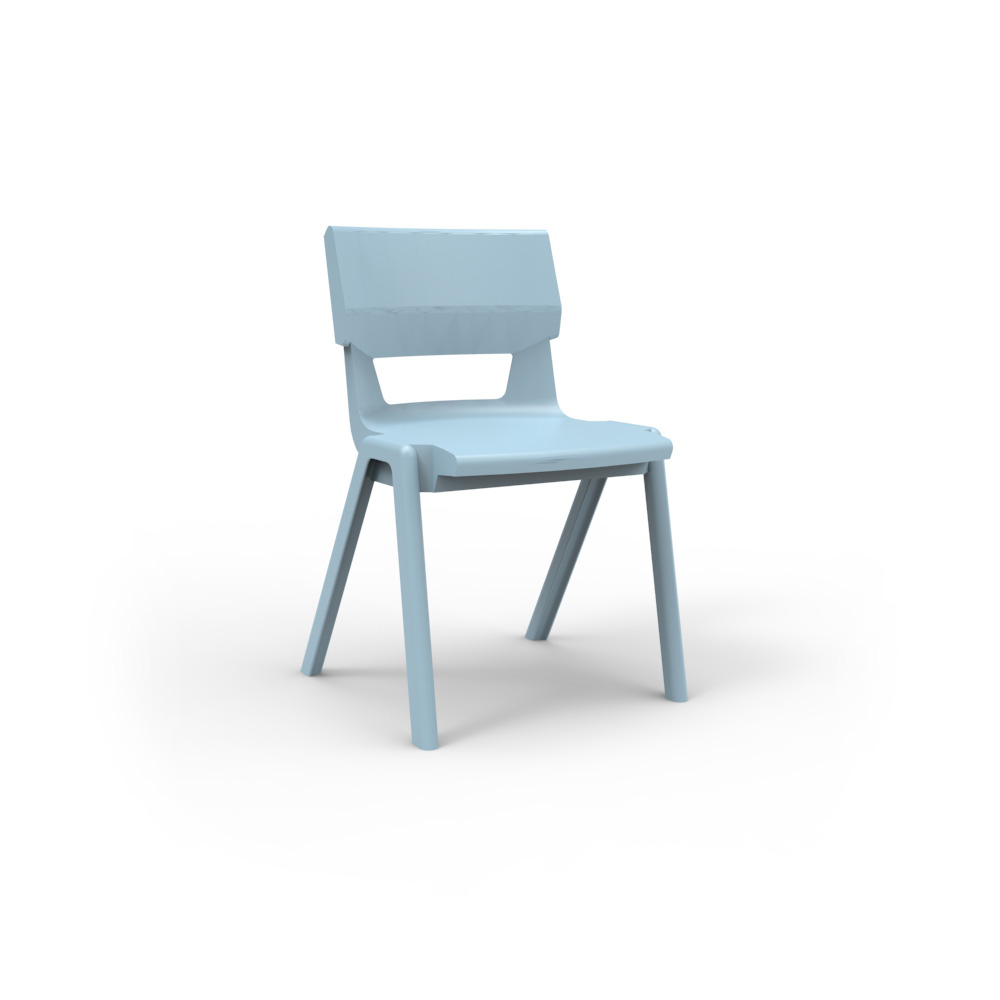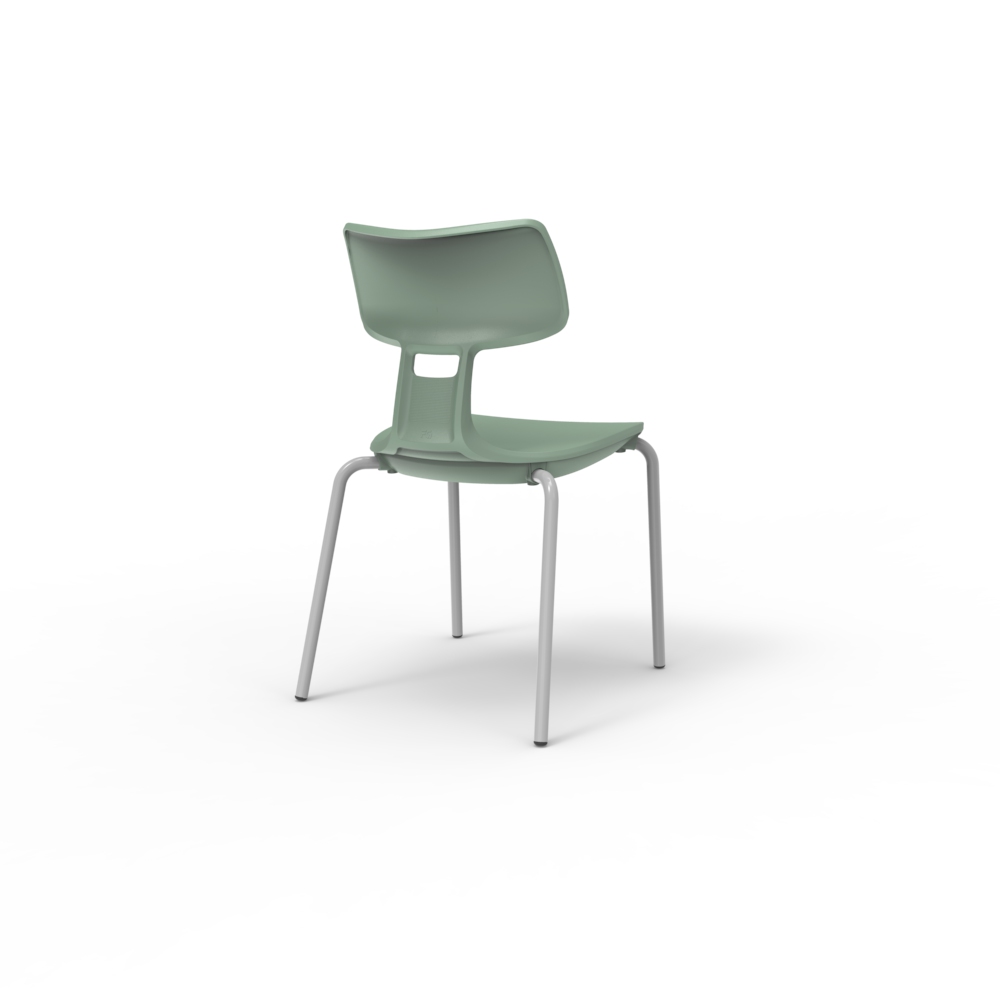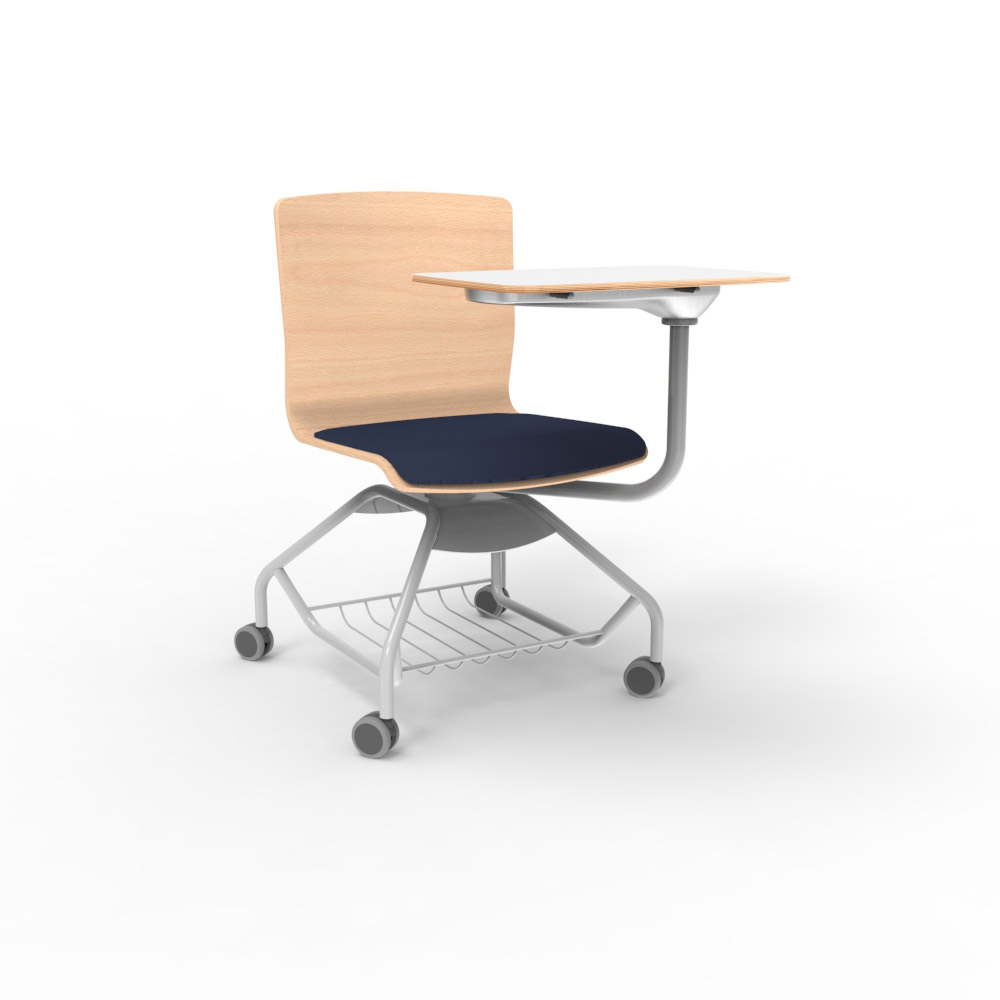In the educational environment, every detail matters to foster effective learning. Although we often focus on content and methodologies, furniture also plays a key role, especially chairs.
Ergonomic school chairs are designed to support the physical development of children and young people, helping them maintain a healthy posture, reduce fatigue, and improve concentration.
In this article, we explore why choosing ergonomic chairs is an investment in well-being, health, and academic performance.
How poor posture affects classroom performance
Spending many hours sitting on an unsuitable chair not only causes temporary discomfort but can have significant effects on students’ physical health and emotional well-being. This issue is especially relevant during growth stages, when the body is still developing and is more vulnerable to adopting poor postures that, over time, can become chronic.
Among the most common effects of incorrect posture are:
– Muscle pain, especially in the back, neck, and shoulders.
– Physical and mental fatigue, making it harder to keep up with the school pace.
– Decreased concentration, as an uncomfortable body distracts attention.
– Increased absenteeism, due to recurring physical discomfort that can lead to medical visits or forced breaks.
That is why it is essential that school furniture—especially chairs—promotes ergonomic posture from an early age. Investing in well-designed chairs is not just a matter of comfort: it is an educational tool that safeguards health and enhances learning.

Keys to choosing a suitable ergonomic chair for schools
A well-designed ergonomic chair is essential to ensure that students maintain proper posture and feel comfortable throughout the school day. To achieve this, it must adapt to the physical needs and growth of children and young people, promoting healthy habits from an early age.
Among the essential features that a good ergonomic chair should include are:
– Anatomical backrest:
It should respect the natural curvature of the spine, providing support in the lumbar area and preventing muscle tension. This helps prevent pain and encourages healthy posture.
– Proper seat height:
It is vital that the chair allows the student’s feet to rest easily on the floor, so that the legs form a comfortable angle and excessive pressure on the back of the thighs is avoided.
– Comfortable and firm surface:
The seat should be sufficiently padded to offer comfort but firm enough to distribute body weight evenly and prevent fatigue.
– Strong and safe materials:
Preferably non-slip to avoid unwanted movements and easy to clean to maintain classroom hygiene. Durability is key to withstanding heavy daily use.
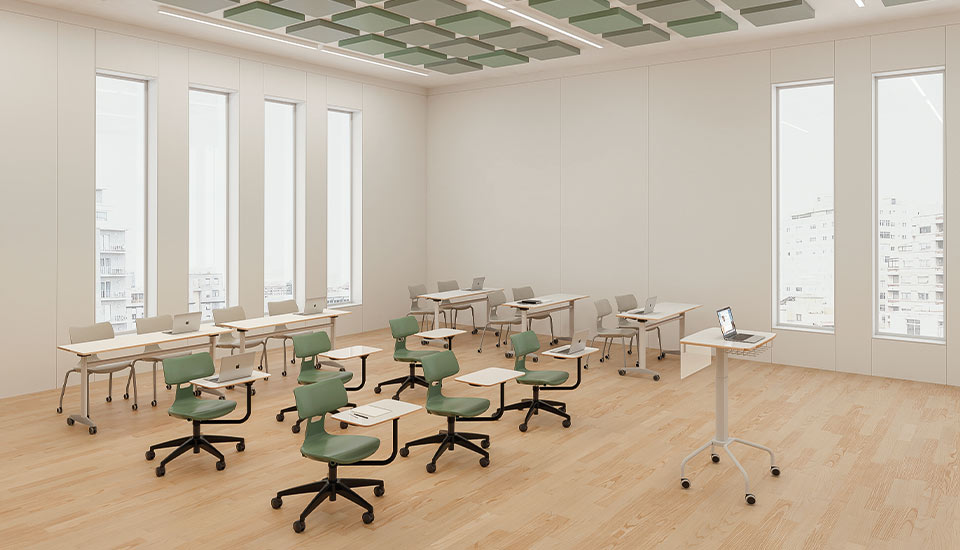
Ergonomics and functionality in different types of school chairs
Ergonomic chairs are not a one-size-fits-all model—they adapt to the different needs depending on the educational stage and type of classroom use.
Below, we review the most common types and their features:
Stackable ergonomic chairs
These chairs combine ergonomic support with the functionality of being stackable, allowing space optimization in flexible and multipurpose classrooms. They are ideal for environments that require quick reconfiguration and easy storage.
Chairs with high backrest and wheels
Widely used in university settings and collaborative workspaces, these chairs provide enhanced lumbar support and effortless mobility, making them ideal for long study or work sessions. The wheels allow smooth movement, encouraging interaction and a dynamic environment.
Height-adjustable models
Perfect for schools with students of different ages or inclusive classrooms, these chairs allow height (and sometimes backrest) adjustment to meet individual needs, promoting correct and personalized posture.
Each chair type is designed to balance ergonomics, durability, and functionality, adapting to the challenges of every educational space.
Keys to choosing the ideal chair according to the student’s size and age
Choosing the right ergonomic chair means taking into account the students’ age and body size to ensure comfort, postural health, and functionality. Each educational stage requires specific features that address the group’s physical needs and daily activities:
Early childhood education (3–5 years old)
Chairs should be lightweight so children can move them easily, have a low height that allows their feet to touch the floor, and feature rounded edges to prevent injuries. Simplicity and safety are key at this stage, where furniture must support exploration and constant movement.
Primary education (6–11 years old)
At this stage, chairs need a backrest that provides good lumbar support and a height adapted to the students’ size, promoting correct posture. Durable designs that withstand daily use are valued, combining comfort with longevity.
Secondary education (12–16 years old)
For growing adolescents, chairs require sturdier structures and larger dimensions to accommodate physical changes. Ergonomics remain essential to prevent postural issues and support concentration during long study sessions.
University and higher education
At this level, chairs should offer mobility—such as wheels or stackable designs—versatility for different activities, and the strength to withstand intensive use. Additionally, designs often combine functionality with a modern aesthetic to suit collaborative and dynamic environments.
In addition to considering these guidelines, it is advisable to choose chairs that comply with the UNE-EN 1729 standard, which establishes ergonomic and dimensional criteria for school furniture, ensuring that each student has equipment perfectly adapted to their needs.
An ergonomic chair is not just a simple seat, but a tool that directly impacts students’ postural health, concentration, and well-being.
At Federico Giner, we design and manufacture school chairs that combine ergonomics, durability, and smart design, tailored to each educational stage. If you want to enhance the learning experience through furniture, contact us—we’ll be happy to help you transform your educational spaces.
What is an ergonomic school chair?
It is a type of chair designed to promote a healthy posture in students, adapting to their anatomy and stage of growth. Its goal is to prevent physical discomfort, improve concentration, and promote well-being during class hours.
Why is it important to use ergonomic chairs in the classroom?
Ergonomic chairs help prevent muscle pain, fatigue, and postural problems. They also improve comfort, which translates into greater attention span and academic performance. They are an investment in health and learning.
What type of chair is best for flexible classrooms?
Stackable ergonomic chairs or chairs with wheels are ideal for multipurpose spaces, as they combine comfort with ease of movement and storage. They allow the classroom to be quickly reconfigured and adapted to different teaching methods.
Is it better for chairs to be height-adjustable?
Yes, especially in inclusive classrooms or schools with students of different ages. Height-adjustable chairs promote a personalized and correct posture, adapting to individual needs.

